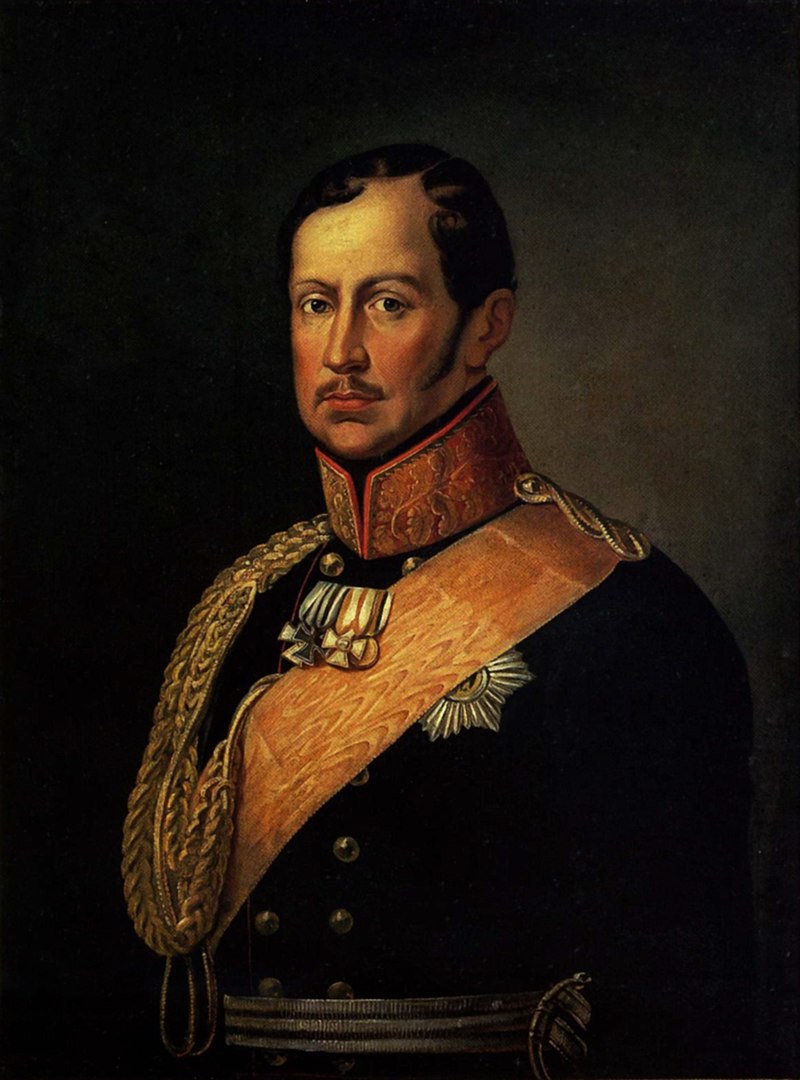
III. Frederick William was king of Prussia from 1797 until his death. He is a member of the House of Hohenzollern and was also Elector of Brandenburg until 1806. Frederick initially did everything he could to avoid the Napoleonic wars, but in 1805 he joined the third coalition. After the Peace of Tilsit, he lost the possessions received during the partition of Poland and the provinces west of the Elbe. These losses amounted to more than half of the then Kingdom of Prussia. III. Vilmos Frigyes also implemented reforms, such as the emancipation of serfs and the creation of municipal governments. Emperor Napoleon was defeated in the battle of the peoples of Leipzig in 1813, which contributed to the action of the reform forces. 1793. On December 24, Vilmos Frigyes (even as heir to the throne) married Lujza, Princess of Mecklenburg-Strelitz (1776–1810), II. daughter of Grand Duke Károly of Mecklenburg-Strelitz (1741–1816) and Princess Friderika Karolina Lujza of Hesse-Darmstadt (1752–1782). They had ten children, seven of whom reached adulthood. Vilmos Frigyes was widowed in 1810, and in 1824 he entered into a morganatic marriage with the 24-year-old Countess Auguste von Harrach (1800–1873), to whom he later gave the title of Duchess of Liegnitz. This marriage remained childless.
III. King Frederick William of Prussia reigned from 1797 to 1840. During his reign, significant changes were made in the Prussian coinage. At the end of the 18th century, silver and gold were still the official currency in Prussia. Among the silver coins, the most frequently used were 1/6, 1/3 é, 1 ⅔, 1 tallé and 24 groschen. Among the gold coins, the most frequently used were 10, 5 and 2 thalers. III. At the beginning of Frederick William's reign, the Prussian economy was hit by severe financial difficulties. The king therefore introduced paper money, the thaler, in 1804. The taler was initially worth 1/3 thaler, but later its value rose to 1 thaler. During the Napoleonic wars, Prussia lost its territories on the left bank of the Rhine. In these areas, the use of silver coins was still widespread, so the Prussian government introduced silver coins in the Prussian coinage in 1815. Among the silver coins, the most frequently used were 1/3 and 1 thaler. In 1816, the weight and size of the coins were changed. The weight of 1/6 thaler decreased from 2.88 grams to 2.50 grams, the weight of 1/3 thaler decreased from 7.62 grams to 6.25 grams, and the weight of 1 thaler decreased from 19.53 grams to 15.63 grams. . Vilmos Frigyes' portrait appeared on the coins, and various symbols and coats of arms appeared on the reverse side of the coins. These coins reflected not only the economic stability, but also the political and military power of the Kingdom of Prussia in the era. Coinage changed constantly over the years, and different coins and values reflected the economic conditions and political events of the time.
Numismatics. Online store for old money, coins and banknotes.